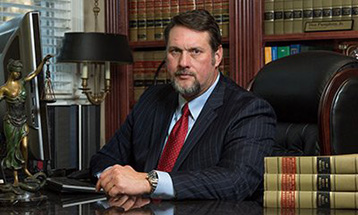- DUI
- Criminal Defense
- Florida DUI
- Traffic Offenses
- Drug Charges
- Marijuana Charges
- Violent Crimes
- Domestic Violence
- Temporary Injunctions
- Weapons Charges
- Theft Crimes
- White Collar Crime
- Juvenile Offenses
- Sex Crimes
- Violation of Probation
- Early Termination of Probation
- Seal or Expunge Criminal Record
- Criminal Appeals
- US Federal Offenses
- Misdemeanor Charges
- Felony Charges
- Co-Defendant Cases
- College Student Defense
- College Student Hearings
- FSU Students
- FAMU Students
- Florida Panhandle Arrests
- Extradition to Florida
- Bench Warrants / Warrants
- Emergency Bond Hearings
- Gambling Charges
- Drone Arrests
- Marsy’s Law
- UAS Infractions
- Introduction of Contraband
- Lying to Police
- Locations
- Case Results
- Our Firm
- Media
- Resources
- Blog
- Contact Us
Florida’s Most Notorious Serial Killers
October 25, 2022 Don Pumphrey, Jr. Violent Crimes Social Share
In recent years there have been multiple biopics on serial killers around the U.S. Netflix has released content on both Ted Bundy and Jeffrey Dahmer—highlighting the cruel details of their killings.
While the media has made people enamored with the stories of serial killers, it is also important to review the details of the cases and what their punishment was for unlawfully killing multiple people. We will provide information on what is considered a serial killer, along with the state’s most notorious killers.
What Constitutes as a Serial Killer?
A serial killer is defined as an individual who is accused of the unlawful killing of two or more victims in separate events. According to a 2018 study from Florida Gulf Coast University, there are an estimated 845 people who have been killed by known or suspected serial killers.
The FGCU research indicated that Florida is ranked #3 in the nation with the most people killed by serial killers. California and Texas are ranked #1 and #2 in comparison. The United States has more recorded serial killers than any other country in the world.
The FBI has differentiated mass murders from serial killings with the presence of a “cool-off’ period in-between victims. That means school shooters or suicide bombers would not be categorized as serial killers.
According to World Population Review, serial killers tend to have some sort of abnormal psychological gratification, thrill-seeking, attention, or financial gain from their killings.
Florida’s Famous Killers
While not every person listed is from the state of Florida, each of these convicted killers stopped through the sunshine state at some point during their deadly path. It’s important to note that out of the total number of homicides that take place, serial killings only make up 1%.
The following is a list of Florida’s most notorious serial killers:
- Samuel Little – In 2014, Little was sentenced to three consecutive life sentences without the possibility of parole after killing three women in California. Little was first arrested in 1982 on the suspicion of killing two women in Mississippi but was released due to lack of evidence. Little was convicted in 2014 for the murder of three women in the 1980s after DNA evidence was linked to him. After receiving three consecutive life sentences, Little told the FBI that he killed over 90 people across the U.S. So far 50 killings were verified to match Little’s confessions—and naming him as “the most prolific serial killer in U.S. history.” The FBI is still attempting to match Little’s confessions to the drawings made of his victims. Little died in a California hospital in 2020.
- Danny Rolling – In 1990, Rolling specifically targeted university students in Florida, giving him the title of the “Gainesville Ripper.” His first murder took place at the University of Florida when he stabbed two girl students to death—leaving their bodies mutilated. Two days later another victim was found raped, stabbed, and decapitated near Santa Fe College. One day after, Rolling killed two more UF students and roommates. Rolling was finally arrested on unrelated burglary charges, but police managed to identify him as the serial killer. He later admitted to killing three other people in Louisiana. Rolling was given the death penalty and was executed in 2006.
- Gary Ray Bowles – Referred to as the “I-95 Killer” Bowles began his killing spree in Daytona Beach in 1994. During his spree, Bowles killed six people across Florida, Georgia, and Maryland. In each of the cases, Bowles would prostitute himself to the victims before beating, strangling them, and then stealing their credit cards. Bowles was finally caught and charged with the murder of Walter Hinton, receiving the death penalty. Bowles was executed by lethal injection in 2019 at the Florida State Prison.
- Christine Falling – Women make up only 6% of serial killers. Christine Falling became one of the few women serial killers—and also one of the youngest after being convicted at the age of 19. Falling was given the nickname “the killer babysitter” after murdering three children she was in charge of babysitting. According to one report, there were an additional two children who died while on Falling’s watch. The youngest victim was only 10 weeks old, and an autopsy indicated his cause of death was strangulation. Falling confessed to three of the deaths, is still in prison, and was denied parole in 2017.
- Aileen Wuornos – Arguably the most notorious woman serial killer, Wuornos made a name for herself by killing several truck drivers along the I-4 highway. Wuornos was convicted and sentenced to the death penalty after being traced to the murder of a businessman. Wuornos’ story was later depicted in the film “Monster.” Wuornos was executed by lethal injection on October 9, 2002.
- Ted Bundy – Ted Bundy had already been convicted of kidnapping and assaulting a Utah minor by the time he made his way into Florida. The FBI was searching for Bundy when he killed two students from Florida State University on January 14th, 1978. His last victim was in Lake City about three weeks after the attacks at FSU. The 12-year-old victim’s body was found two months later after Bundy had already been placed back in custody. Bundy was sentenced to the death penalty for both Florida murders and was killed via electric chair at Florida State Prison in January 1989.
How are Serial Killers Found?
A study by Brittany Hood of Texas A&M International University, and Paige White & Jenna Bunner of Indiana University explains that despite the current media portrayal of a rise in violent crime, data suggest that they are actually in decline. With this decline, they explain in their research how homicide, a type of violent crime, has also gone down.
In their study, the researchers looked at 671 different serial killers and found some of the most consistent ways in which investigators identified and apprehended these serial killers included:
- Victims who survived their attack,
- DNA evidence,
- The killer was turned in by one of their associate, family, or friend,
- There were able to obtain fingerprint evidence,
- The serial killer had a prior offending history,
- The investigators found one of the bodies in the home, and
- The serial killer was arrested for an unrelated charge.
While these findings show trends and methods that have remained consistent and others that have changed over time, the research focused on serial killers as there have not been many studies that focused on more than traditional violent crimes.
Finding a Defense Attorney in Tallahassee, Florida
The unlawful killing of another person has some of the harshest consequences in the state of Florida. Florida still implements the death penalty, meaning a person can be sentenced to death depending on the severity of the crime. The individuals in the above list are some of the most notorious killers in history. While not all crimes are that extreme—one thing in common is that anyone accused of a crime will need legal help from a skilled Florida murder defense attorney.
Don Pumphrey and his team at Pumphrey Law Firm have experience representing clients across the state for various criminal charges. Contact us for a free consultation at (850) 681-7777 or leave an online message on our website.










